Job Vacancies
Festveranstaltung anlässlich des 20-jährigen Bestehens der Beratenden Kommission NS-Raubgut, Jüdisches Museum Berlin
200 Gäste aus dem In- und Ausland nahmen teil. Prof. Hans-Jürgen Papier, Vorsitzender der Kommission, begrüßte die Gäste und sprach über die Arbeit der Kommission und über Reformerfordernisse. Er betonte die Notwendigkeit der Einführung der seit Jahren geforderten einseitigen Anrufbarkeit der Beratenden Kommission sowie die Verabschiedung eines Restitutionsgesetzes.
Die Staatsministerin für Kultur und Medien, Claudia Roth, sprach in ihrer Rede an, dass die Beratende Kommission künftig „deutlich zu stärken“ sei. Sie kritisierte, dass die Nachfahren bis heute „Bittsteller“ seien. Es sprachen außerdem Dr. Josef Schuster, Vorsitzender des Zentralrats der Juden in Deutschland, Prof. Anthony Friend, der in dem ersten Verfahren vor der Kommission Anspruchsteller war und Prof. Joachim Schachtner, Staatssekretär im Niedersächsischen Ministerium für Wissenschaft und Kultur.
Die Festrede hielt Prof. Mary Fulbrook zum Thema “Wiedergutmachen“ – aber wie? Musikalisch wurde der Abend von einem Streichterzett der Barenboim-Said Akademie begleitet.
Memorandum of the The Advisory Commission
I. Currently no regulatory legal provisions
The Advisory Commission on Nazi-Looted Property was established 20 years ago. It is made up of ten public figures and advises on particularly complex looted art cases. The members of the Advisory Commission have a background in law, art history, history or politics. Since 2016 there have been two Jewish representatives among the ten members. Commission members work on a voluntary basis.
Since its foundation 20 years ago, the Advisory Commission on Nazi-Looted Property has ruled on 23 cases of looted art. Its recommendations have always received a great deal of attention, including both approval and at times criticism. For years now, the recommendations have been regarded as trend-setting in the scholarly literature, both in Germany and abroad. Although they cannot be binding, they play an important role in the decision-making process in which museums and their state or municipal sponsoring bodies engage, and they are of considerable significance to the art market. The small number of recommendations issued by the Commission is due to the small number of joint requests submitted to it for mediation. By contrast, there is still an incalculable number of unresolved claims.
Some 40,000 search entries and a further 35,000 found-object reports of seized items are listed in the so-called Lost Art Database alone, a platform dedicated to the publication of such international search and found-object reports. Behind each one of these items there is a family whose members were the victims of persecution. In addition, there are countless other cases of loss where the information required for registration has not survived or has not yet been sufficiently researched to be able to publish a search entry or a found-object report. There are no statistics on the restitutions that take place outside of the proceedings of the Advisory Commission on Nazi-Looted Property. What is more, the German Lost Art Foundation does not publish how many settled cases are reported to the Lost Art database.
The Advisory Commission on Nazi-Looted Property was constituted as an institution which is to develop recommendations for the resolution of disputed cases in the spirit of the Washington Principles, but only if the parties involved participate voluntarily in the proceedings in which the Advisory Commission acts as a mediating body. The Commission is not a
legal entity per se and there is no binding legal basis for its existence. Nor are the Washington Principles a binding treaty under international law: they are a “political and moral commitment” undertaken by the signatory states. The Common Statement adopted in Germany on the implementation of the Washington Principles by the federal government, the Länder and the national associations of local authorities and the so-called Guidelines have no legally binding force.
The Guidelines do set out fundamental prerequisites, which, if met, mean that a case of Nazi-looted art is to be assumed. But they are not enshrined in law. The same applies to the Rules of Procedure of the Advisory Commission; these likewise lack the quality of a legal ruling. As such, questions of restitution with regard to cultural property seized as a result of Nazi persecution are not regulated by law in Germany. For two decades, a so-called “soft law” has been used in Germany, and the Advisory Commission was set up in accordance with this soft law. There is no legally binding set of rules; the work of those involved is based on political-moral “declarations of commitment”, i.e. statements that they will endeavour to act in a politically and morally benign way. The Advisory Commission itself is an institution based on such a political agreement between the federal government, the Länder and the national associations of local authorities.
It is inappropriate and inadequate that there is no legal basis for an institution to decide on the restitution of cultural property lost as a result of Nazi persecution in the country of the perpetrators. There is no clear political commitment in the form of legally binding guidelines for dealing with the cases of looted art that has not yet been restituted.
The current coalition agreement holds out the prospect of improving Nazi-looted art institutions by standardising a “right to information”, the exclusion of the “statute of limitations on claims for restitution”, proposing a “central court of jurisdiction” and the strengthening of the “Advisory Commission”. None of these have been put into practice to date. Neither the federal government nor the Länder have presented any suitable reform proposals in the past. In view of this and on the occasion of its 20th anniversary, it is important to the Advisory Commission to identify potential structural weaknesses and to set out necessary or conceivable approaches to reform.
II. Structural deficiencies and their correction
1. The option to lodge a unilateral request for mediation
The main obstacle to the handling of more looted art cases by the Advisory Commission is that the descendants of the victims do not have an option to initiate proceedings before the Commission on a unilateral basis. The Commission can only take action if both sides – i.e. both the descendants of the persecutees and the museums or other institutions dedicated to the preservation of cultural property – agree to the request for mediation.
This state of affairs contradicts No. 7 of the Washington Principles: “Pre-war owners and their heirs should be encouraged to come forward and make known their claims to art that was confiscated by the Nazis and not subsequently restituted.(...)”. The “Madame Soler” case in particular has gained sad notoriety because the Bavarian State Painting Collections, with the consent of the Bavarian State Government and the Bavarian State Parliament, have refused to participate in the proceedings for more than ten years on the grounds that this is not a case of looted art. Yet determining whether or not a work of art is to be considered looted art would be precisely the task of the Commission – and not that of the institution affected by the outcome of the assessment.
Former Minister of State Monika Grütters announced in 2018 that she would oblige all museums that receive federal funding for provenance research to agree to any request for mediation lodged by descendants with the Advisory Commission. Despite assurances to the contrary by the Commissioner for Culture and the Media, this requirement has not yet been implemented (except in the case of the few museums directly subordinate to the federal government). De facto, this amounts to a veto right for the vast majority of public institutions that preserve cultural assets. From the perspective of the victims and their descendants, this is unreasonable and inappropriate; they cannot bring their claims before the Commission and have them resolved unless the public institutions agree to them doing so.
The fact that victims’ descendants cannot unilaterally lodge a request for mediation with the Commission is met with incomprehension, both in Germany and abroad. The procedural rules of other countries such as the Spoliation Advisory Panel in the UK and the Restitutiecommissie in the Netherlands provide for unilateral appeal by injured parties. Courts in the US make the acceptance of a looted art case dependent on whether victims are guaranteed a fair trial in their home country.
Victims and their descendants must be given the opportunity to initiate proceedings before the Commission without having to depend on the voluntary participation of the cultural institution in whose custody the cultural property is. The most important goal of any reform of the Advisory Commission must be to make it possible for the descendants of the victims to have potential looted art cases assessed by the Commission even without the consent of the institutions dedicated to the preservation of cultural property or the bodies responsible for them.
2. Binding effect of the decisions
The Advisory Commission can currently only make recommendations and not issue binding decisions. These recommendations cannot be enforced: it is up to the parties themselves to act on them. Even though it can be assumed that the bodies responsible for public institutions will follow the recommendations of the Commission, they are not obliged to do so. The Commission’s 23 recommendations to date have all been implemented, but in some cases against considerable opposition and only as a result of pressure from the media and the public.
The Commission must be able to issue decisions which are binding and therefore enforceable. This would also improve the Commission’s visibility. The Commission would then no longer be merely “advisory”, however. In order to enable this, issues of restitution of cultural property seized as a result of Nazi persecution have to be subject to regulatory legal provisions in Germany. For this reason, binding legislation is required to regulate the establishment, status and composition of the Commission. The procedure before the Commission should also be regulated, including the possibility that requests for mediation can be lodged unilaterally and that the decisions arrived at – which up to now have had the status of recommendation – are legally binding. By virtue of Article 87(3) of the Basic Law (GG), the federal legislature, which is called upon to legislate under Article 74(1)(9) of the Basic Law (GG), could therefore institutionalise the Commission as a superior federal authority or as an independent legal entity. In this context, the full autonomy of this institution would also have to be legally guaranteed. Above all, the assessment standards according to which the Commission decides on restitution requests would also have to be subject to regulatory legal provisions.
3. Cultural property in private hands – substantive legislation on restitution indispensable
The Washington Principles relate to cultural property in both public and private ownership. Yet the way they are implemented in Germany has meant that up to now, virtually without exception, proceedings have dealt with cultural property in public ownership, to the exclusion of looted art owned by private individuals and private institutions. Nevertheless, the major auction houses such as Christie’s and Sotheby’s actively investigate consignments for looted art and, if such a case arises, recommend that consignors come to an agreement with the families concerned. The solution then usually involves the joint sale of the work of art. In these cases, the auction houses waive part of their commission. As a rule, descendants of the persecuted individuals do not receive more than 50% of the auction proceeds. In these constellations, the heirs are not granted a regulated procedure and there is no recognition of the injustice inflicted by an institution of the perpetrator’s country. This is often highly unsatisfactory for the heirs. In the case of cultural objects of lesser value, small auction houses often do not make any effort to establish the provenance at all. As such, it is only true to a very limited extent contrary to the claim that many cases are resolved through the market. For a long time, there have been calls for private institutionsor individuals who own the items of cultural property in question to be included in restitution proceedings. If the aim is to go beyond the notion of voluntary action here, comprehensive legislation on restitution is required: under current civil law, claims for restitution linked to seizure as a result of Nazi persecution are no longer justified or enforceable. The defence of limitation is only one aspect of this that would be addressed at the end of the assessment, so to speak. The primary consideration would be that in many cases the exclusion effect of the Allied Restitution Act would have to be taken into account, according to which claims under civil law would have been ruled out long ago. The possibility of “positive prescription” under Section 927 of the German Civil Code (BGB) would also have to be taken into account. In any case, it must be stated that under current civil law in Germany, claims for restitution do not apply or no longer apply with regard to cultural property that was seized as a result of Nazi persecution. A defence of limitation would not be granted. If the aim is to remedy this situation and enable restitution claims to be brought against private individuals or private institutions as well, the only option is to enact a comprehensive restitution law that establishes new, original claims for restitution. In doing so, the legislature would have to specify the requirements for determining seizure due to Nazi persecution: here it would be guided by the recommendations issued by the Advisory Commission.
The solution proposed by the Bavarian State Government in 2014 and now under consideration again in the coalition agreement is unsuitable: according to this, the statute of limitations on claims for restitution under Section 985 of the German Civil Code (BGB) for cultural property lost in connection with Nazi persecution measures should be lifted.
The reason this is not suitable is because even if the thirty-year limitation period were to cease to apply, the possibility of positive prescription of movable property acquired in good faith would still exist, and this applies for just ten years after a bona fide acquisition. Moreover, under the case law of the Federal Supreme Court, claims for restitution are generally precluded due to the filing deadlines stipulated in the reparation and restitution laws.
III. Statutory regulatory alternatives
For comprehensive restitution legislation to be enacted, constitutional issues have to be examined, in particular the preservation of the fundamental right of freedom of ownership must be ensured under Article 14 (1) of the Basic Law (GG). If owners are subjected to a newly established claim for restitution by third parties, this does not notionally constitute an expropriation within the meaning of Article 14 (3) of the Basic Law (GG), but it is a so-called substance and boundary definition that is subject to compensation. Owners who were in good faith when acquiring the cultural property in question with regard to a Nazi persecution-related seizure can only be obliged to hand it over to third parties if compensation or indemnification is provided for at the same time. Only if they were in bad faith when acquiring the property, i.e. if they acted knowingly with regard to the seizure as a result of Nazi persecution or if they were only unaware of it due to gross negligence, are they not worthy of protection in the constitutional sense and could be legally obliged to surrender the property without receiving an appropriate compensation or indemnification payment. Bona fide owners could only be legally obliged to surrender the cultural property if they were simultaneously granted an entitlement to compensation or settlement. As far as the amount of the latter is concerned, the legislator would not be obliged to base this on the current market value: it might also be below this level, for example taking as a basis acquisition value at the time and subsequent expenses necessary for the preservation and storage of the cultural object.
It would have to be taken into account here that the key issue here is the redress of state injustice: ultimately, the German state has to answer for this injustice committed in the name of Germany. The financial expenses for such compensation and indemnification payments would therefore have to be borne by the public sector, whereby the establishment of a compensation fund under public law would have to be considered.
As far as what form the Commission would take that has up to now been referred to as “advisory”, several solutions would be conceivable in the case of a legal regulation of this institution. For example, a solution under administrative law comparable to that of the Property Act (VermG) might be considered. In this case, the Commission would be entrusted to decide on the restitution request in its capacity as a superior federal authority: it would then issue its decision by administrative act, and legal action could be taken against this decision. Legislation would not have to provide for the full range of administrative proceedings, however; it could also provide for the establishment of special administrative courts for looted art cases.
An alternative would be a purely civil law solution: this would mean that the newly created statutory claims for restitution under civil law could in principle be decided by the ordinary courts. Here, the Commission could be maintained in the form of an arbitration tribunal, with an arbitration procedure being required by law. It would be a welcome step to develop the Commission further in this way since it is an institution that has now accumulated a great deal of experience and expertise.
IV. Provenance research
Federally funded provenance research in Germany is inadequately regulated. In the vast majority of cases, the funds go to museums. As things currently stand, the analysis of research dossiers is not subject to any independent organisation or body, but is carried out by the museums themselves. As a result, museums still only respond to the problematic nature of their holdings when heirs of the aggrieved conduct their own research and bring forward claims. Only since 2018 has it been possible for the descendants of victims to claim research funds, too. Only twelve private research projects have been funded to date, however. Foreign descendants can only apply for research funds in cooperation with a German institution.
The funds for provenance research – a total of almost 50 million euros since 2008 – should not go exclusively to the museums, but to an independent research institute. This could also help reduce the sometimes immense costs incurred to victims and their descendants in enforcing their rights. At the instigation of the Commission, for example, this institution would compile dossiers on individual holdings or works, which would then be legally assessed by the Independent Commission.
V. Concluding remarks
The current state of legal regulation in questions of the restitution of cultural property seized as a result of Nazi persecution is unsatisfactory. The deficiencies are systemic because the federal government, the Länder and the municipalities took a relatively easy way out twenty years ago by dispensing with regulatory legal provisions. This must now be changed urgently in order to silence criticism in Germany and above all abroad that the Federal Republic is neither sufficiently able nor genuinely willing to redress Nazi injustice with regard to cultural property in an adequate manner. From the point of view of the Advisory Commission, this criticism is particularly unfortunate because it is likely to discredit the work of the Commission as a whole, even though the achievements of the Commission over the last two decades are to be regarded as successful and effective within the narrow limitations of the system.




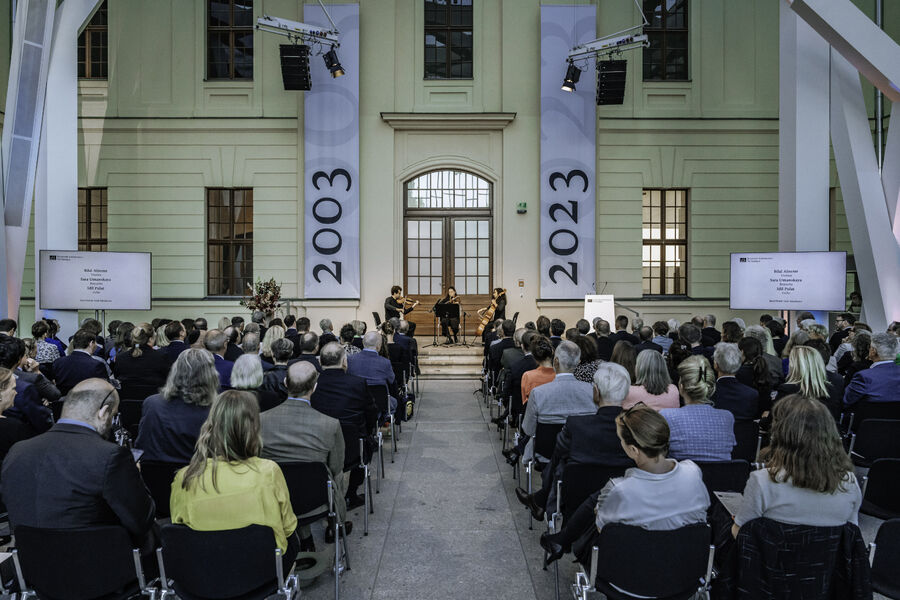 2003 – 2023, Festveranstaltung anlässlich des 20-jährigen Bestehens der Beratenden Kommission NS-Raubgut am 14. September 2023 im Jüdischen Museum Berlin, © Beratende Kommission NS-Raubgut/ Gabriele Di Stefano, 2023
2003 – 2023, Festveranstaltung anlässlich des 20-jährigen Bestehens der Beratenden Kommission NS-Raubgut am 14. September 2023 im Jüdischen Museum Berlin, © Beratende Kommission NS-Raubgut/ Gabriele Di Stefano, 2023
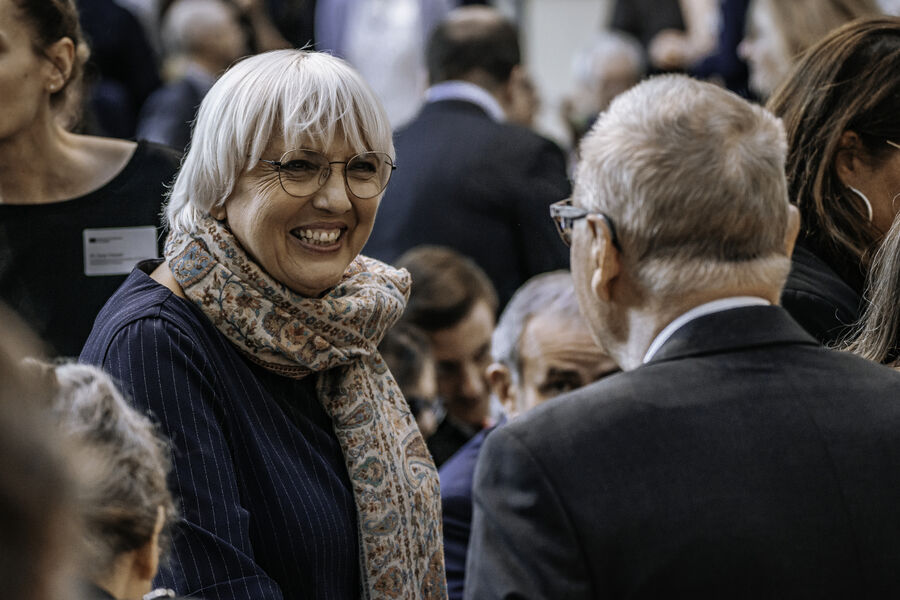 Claudia Roth, Staatsministerin für Kultur und Medien, begrüßt den Vorsitzenden der Beratenden Kommission Prof. Dr. Hans-Jürgen Papier, © Beratende Kommission NS-Raubgut/ Gabriele Di Stefano, 2023
Claudia Roth, Staatsministerin für Kultur und Medien, begrüßt den Vorsitzenden der Beratenden Kommission Prof. Dr. Hans-Jürgen Papier, © Beratende Kommission NS-Raubgut/ Gabriele Di Stefano, 2023
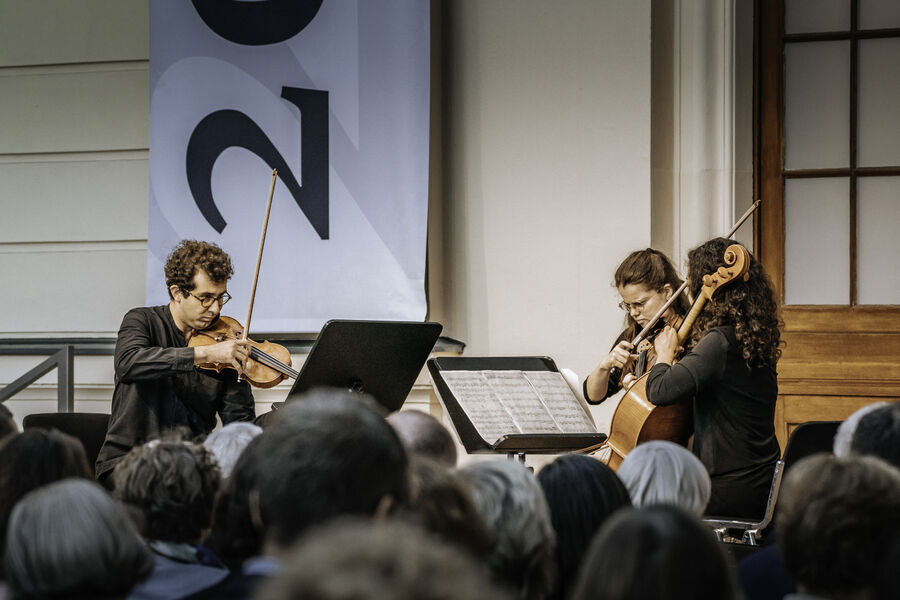 Streichtrio der Barenboim-Said Akademie, Bilal Alnemr, Sara Umanskaya und Idil Pulat, © Beratende Kommission NS-Raubgut/ Gabriele Di Stefano, 2023
Streichtrio der Barenboim-Said Akademie, Bilal Alnemr, Sara Umanskaya und Idil Pulat, © Beratende Kommission NS-Raubgut/ Gabriele Di Stefano, 2023
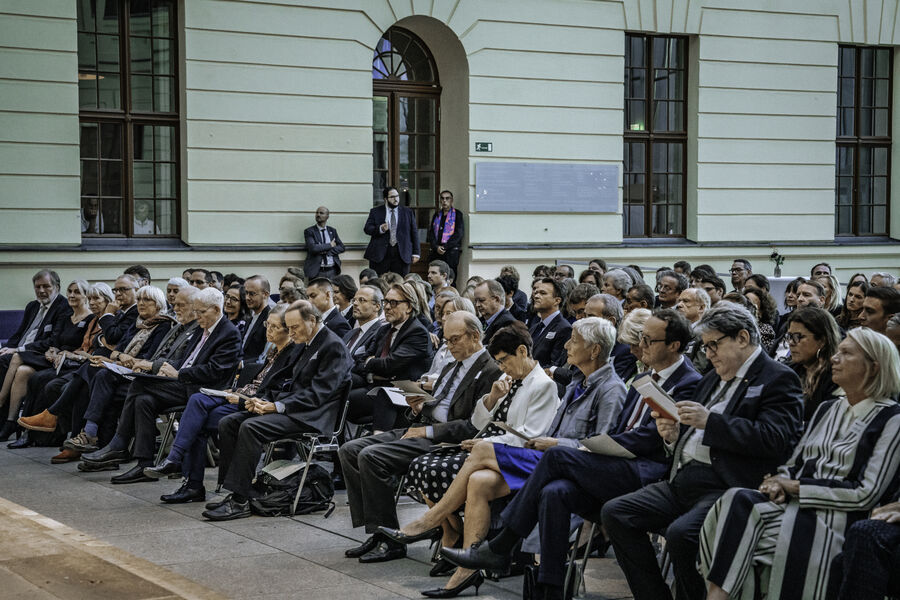 Blick ins Publikum, © Beratende Kommission NS-Raubgut/ Gabriele Di Stefano, 2023
Blick ins Publikum, © Beratende Kommission NS-Raubgut/ Gabriele Di Stefano, 2023
 Streichtrio der Barenboim-Said Akademie, Bilal Alnemr, Sara Umanskaya und Idil Pulat, Gideon Klein, Streichtrio für Violine, Viola und Violoncello (1944) II. Lento, © Beratende Kommission NS-Raubgut/ Gabriele Di Stefano, 2023
Streichtrio der Barenboim-Said Akademie, Bilal Alnemr, Sara Umanskaya und Idil Pulat, Gideon Klein, Streichtrio für Violine, Viola und Violoncello (1944) II. Lento, © Beratende Kommission NS-Raubgut/ Gabriele Di Stefano, 2023
 Blick ins Publikum, © Beratende Kommission NS-Raubgut/ Gabriele Di Stefano, 2023
Blick ins Publikum, © Beratende Kommission NS-Raubgut/ Gabriele Di Stefano, 2023
 Prof. Dr. Hans-Jürgen Papier, Vorsitzender der Beratenden Kommission NS-Raubgut, ehem. Präsident des Bundesverfassungsgerichts: „Es fehlt ein klares Bekenntnis der Politik in Gestalt rechtlich verbindlicher Vorgaben für die Aufarbeitung der bis heute nicht restituierten Raubkunstfälle.“, © Beratende Kommission NS-Raubgut/ Gabriele Di Stefano, 2023
Prof. Dr. Hans-Jürgen Papier, Vorsitzender der Beratenden Kommission NS-Raubgut, ehem. Präsident des Bundesverfassungsgerichts: „Es fehlt ein klares Bekenntnis der Politik in Gestalt rechtlich verbindlicher Vorgaben für die Aufarbeitung der bis heute nicht restituierten Raubkunstfälle.“, © Beratende Kommission NS-Raubgut/ Gabriele Di Stefano, 2023
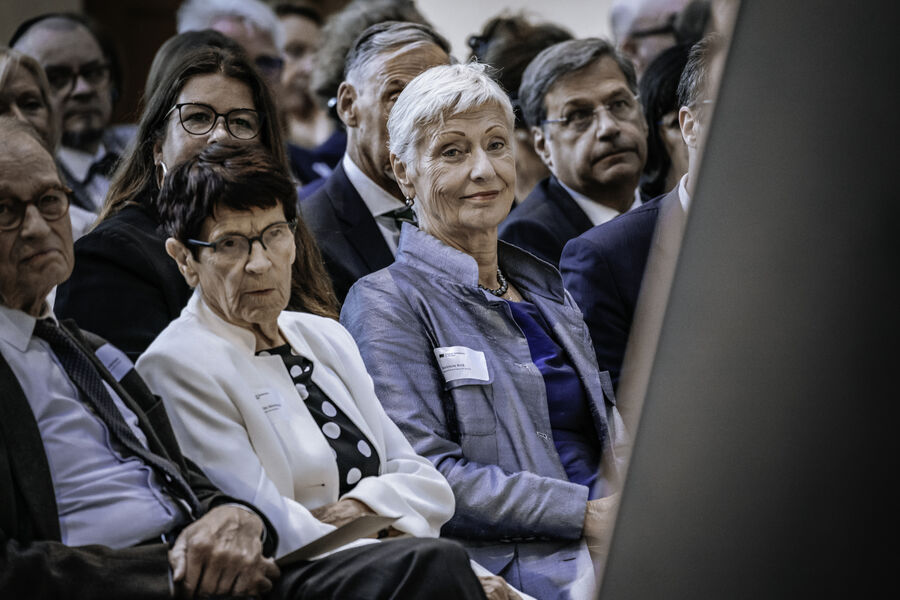 Mitglieder der Beratenden Kommission NS-Raubgut v.l.n.r.: Hans Otto Bräutigam (2011-2017), Prof. Dr. Rita Süssmuth (seit 2003), Marieluise Beck (seit 2018), © Beratende Kommission NS-Raubgut/ Gabriele Di Stefano, 2023
Mitglieder der Beratenden Kommission NS-Raubgut v.l.n.r.: Hans Otto Bräutigam (2011-2017), Prof. Dr. Rita Süssmuth (seit 2003), Marieluise Beck (seit 2018), © Beratende Kommission NS-Raubgut/ Gabriele Di Stefano, 2023
 Prof. Dr. Hans-Jürgen Papier, Vorsitzender der Beratenden Kommission NS-Raubgut, ehem. Präsident des Bundesverfassungsgerichts, © Beratende Kommission NS-Raubgut/ Gabriele Di Stefano, 2023
Prof. Dr. Hans-Jürgen Papier, Vorsitzender der Beratenden Kommission NS-Raubgut, ehem. Präsident des Bundesverfassungsgerichts, © Beratende Kommission NS-Raubgut/ Gabriele Di Stefano, 2023
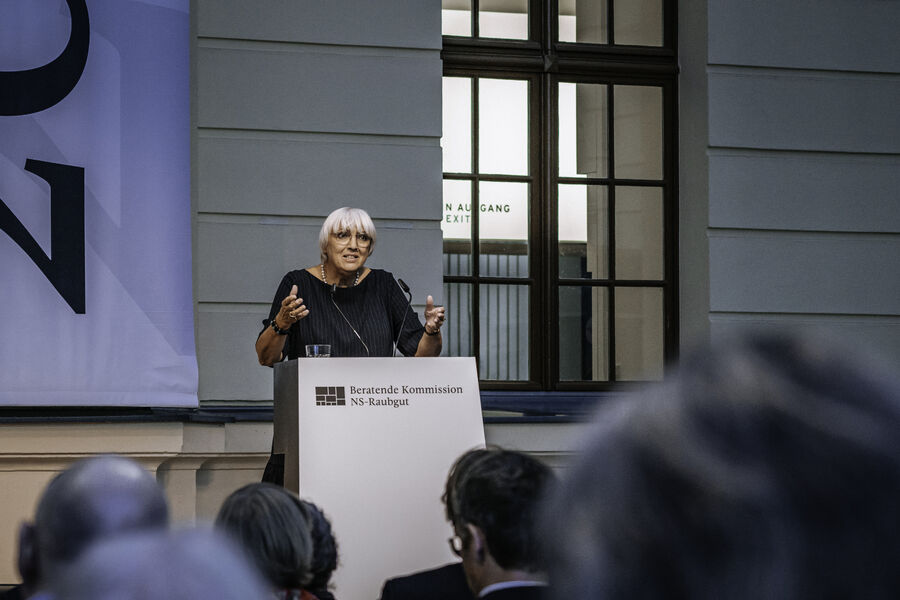 Claudia Roth, Staatsministerin für Kultur und Medien: „Die Aufarbeitung und Erinnerung an die Shoah ist zugleich Auftrag, eine gerechte und faire Lösung für die Betroffenen zu finden; ein Auftrag, das „Nie wieder“ dauerhaft in die Breite der Gesellschaft zu tragen.“, © Beratende Kommission NS-Raubgut/ Gabriele Di Stefano, 2023
Claudia Roth, Staatsministerin für Kultur und Medien: „Die Aufarbeitung und Erinnerung an die Shoah ist zugleich Auftrag, eine gerechte und faire Lösung für die Betroffenen zu finden; ein Auftrag, das „Nie wieder“ dauerhaft in die Breite der Gesellschaft zu tragen.“, © Beratende Kommission NS-Raubgut/ Gabriele Di Stefano, 2023
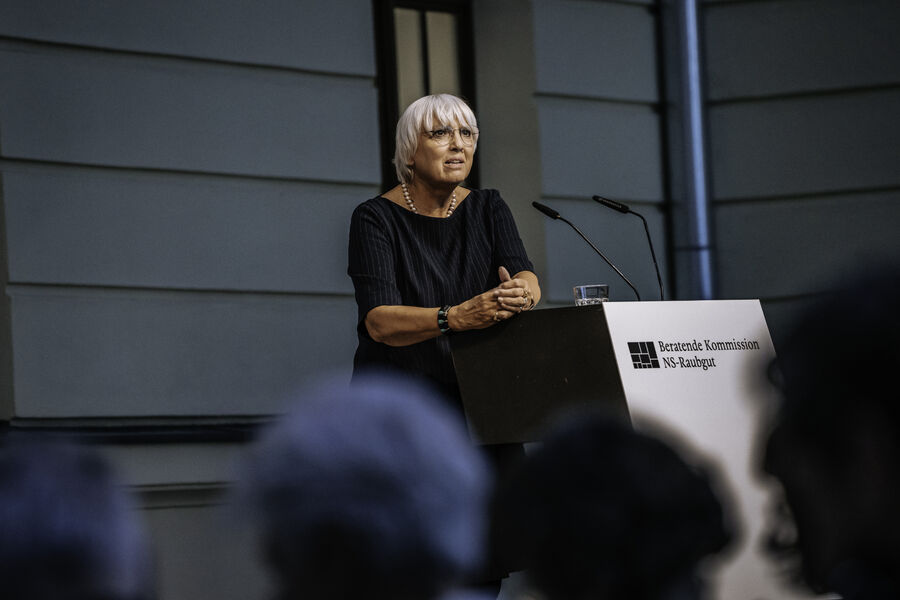 Claudia Roth, Staatsministerin für Kultur und Medien, © Beratende Kommission NS-Raubgut/ Gabriele Di Stefano, 2023
Claudia Roth, Staatsministerin für Kultur und Medien, © Beratende Kommission NS-Raubgut/ Gabriele Di Stefano, 2023
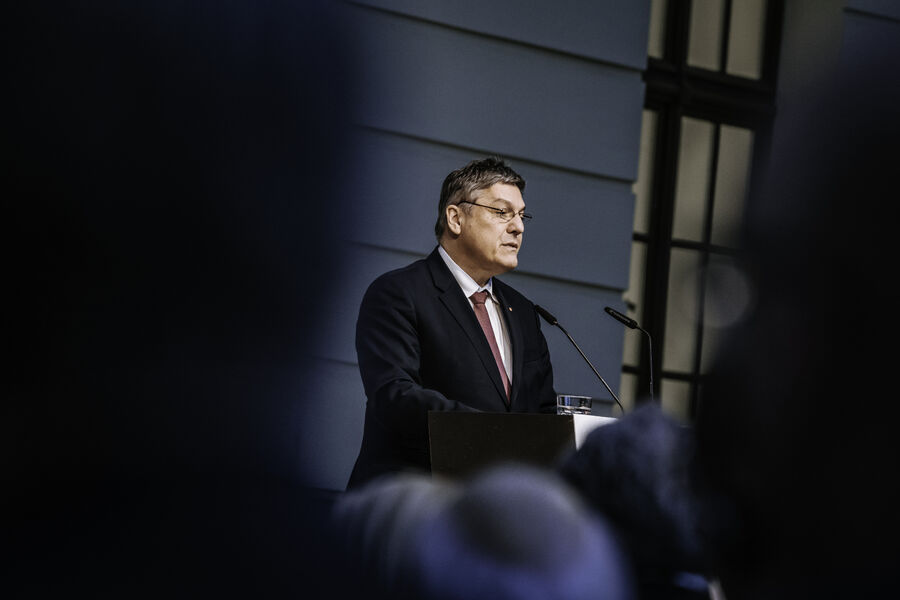 Prof. Dr. Joachim Schachtner, Staatssekretär Niedersächsisches Ministerium für Wissenschaft und Kultur: „Für die künftige Arbeit der Beratenden Kommission werden wir Mittel finden müssen, sie zu stärken, um die Zahl der Fälle zu erhöhen.“, © Beratende Kommission NS-Raubgut/ Gabriele Di Stefano, 2023
Prof. Dr. Joachim Schachtner, Staatssekretär Niedersächsisches Ministerium für Wissenschaft und Kultur: „Für die künftige Arbeit der Beratenden Kommission werden wir Mittel finden müssen, sie zu stärken, um die Zahl der Fälle zu erhöhen.“, © Beratende Kommission NS-Raubgut/ Gabriele Di Stefano, 2023
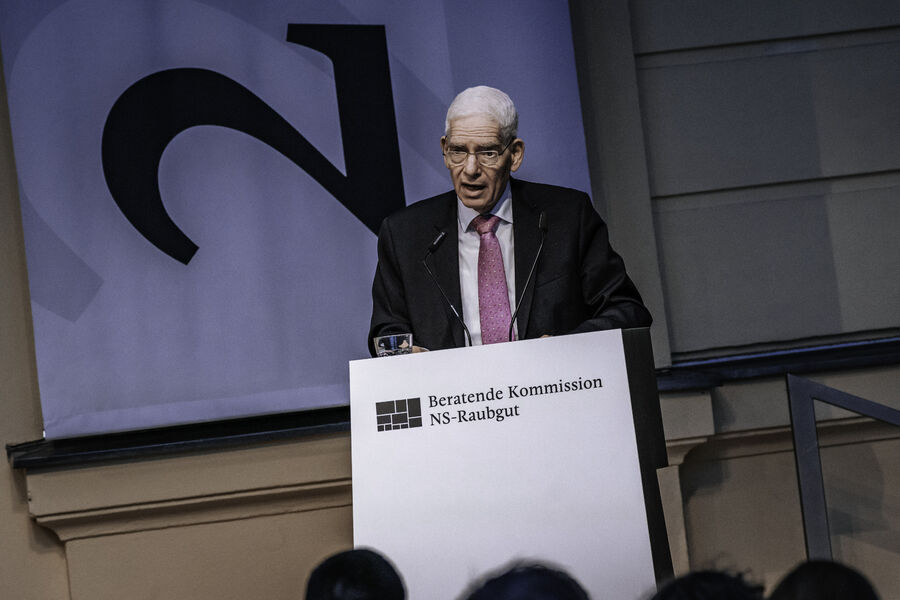 Dr. Josef Schuster, Präsident des Zentralrats der Juden in Deutschland: "Beim Thema NS-Raubkunst geht es um Würde, es geht um Identität, es geht um den Kern der Erinnerungskultur.“, © Beratende Kommission NS-Raubgut/ Gabriele Di Stefano, 2023
Dr. Josef Schuster, Präsident des Zentralrats der Juden in Deutschland: "Beim Thema NS-Raubkunst geht es um Würde, es geht um Identität, es geht um den Kern der Erinnerungskultur.“, © Beratende Kommission NS-Raubgut/ Gabriele Di Stefano, 2023
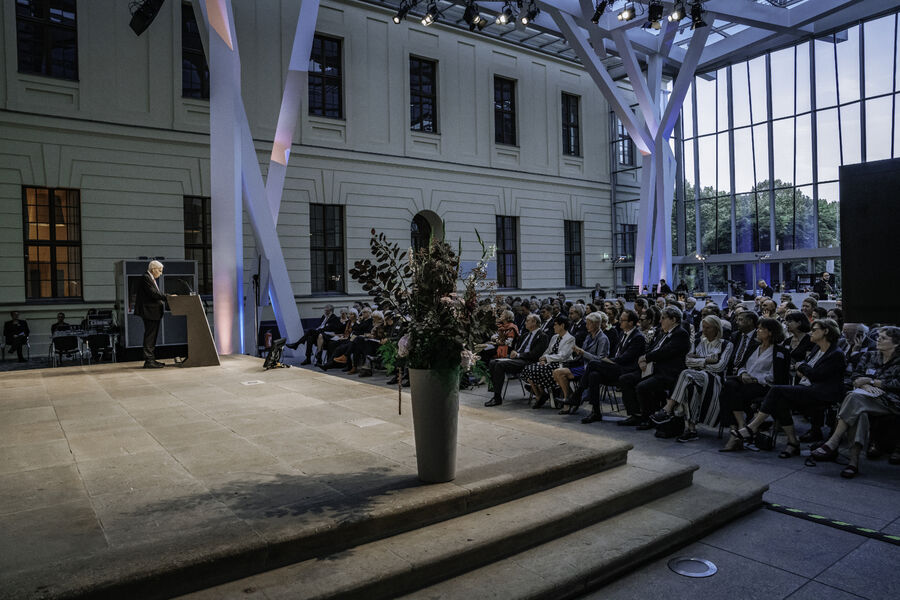 Grußwort Dr. Josef Schuster, Präsident des Zentralrats der Juden in Deutschland, © Beratende Kommission NS-Raubgut/ Gabriele Di Stefano, 2023
Grußwort Dr. Josef Schuster, Präsident des Zentralrats der Juden in Deutschland, © Beratende Kommission NS-Raubgut/ Gabriele Di Stefano, 2023
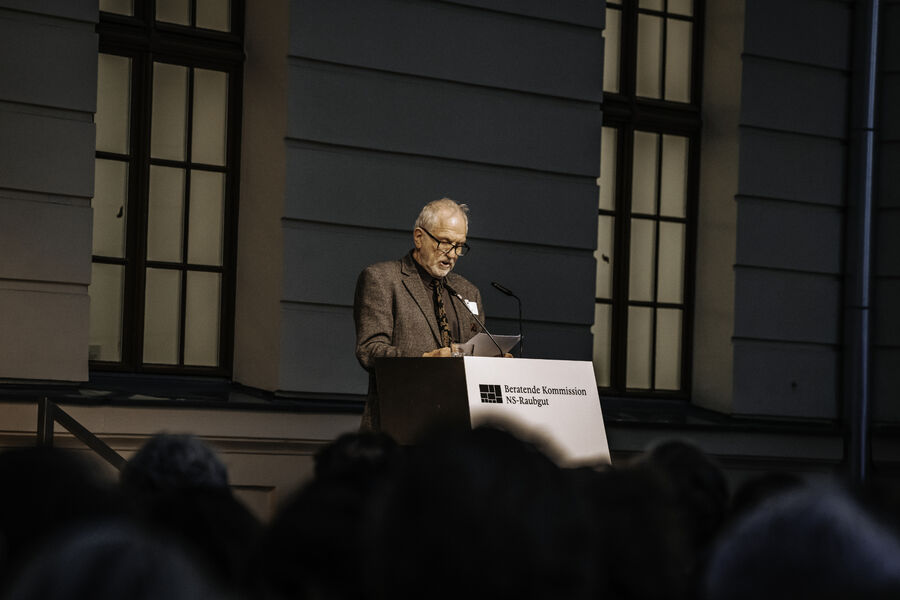 Prof. Anthony Friend, Anspruchsteller im ersten Verfahren der Beratenden Kommission NS-Raubgut in der Sache Erben nach Julius und Clara Freund ./. Bundesrepublik Deutschland, © Beratende Kommission NS-Raubgut/ Gabriele Di Stefano, 2023
Prof. Anthony Friend, Anspruchsteller im ersten Verfahren der Beratenden Kommission NS-Raubgut in der Sache Erben nach Julius und Clara Freund ./. Bundesrepublik Deutschland, © Beratende Kommission NS-Raubgut/ Gabriele Di Stefano, 2023
 Prof. Anthony Friend, Anspruchsteller im ersten Verfahren der Beratenden Kommission NS-Raubgut in der Sache Erben nach Julius und Clara Freund ./. Bundesrepublik Deutschland, © Beratende Kommission NS-Raubgut/ Gabriele Di Stefano, 2023
Prof. Anthony Friend, Anspruchsteller im ersten Verfahren der Beratenden Kommission NS-Raubgut in der Sache Erben nach Julius und Clara Freund ./. Bundesrepublik Deutschland, © Beratende Kommission NS-Raubgut/ Gabriele Di Stefano, 2023
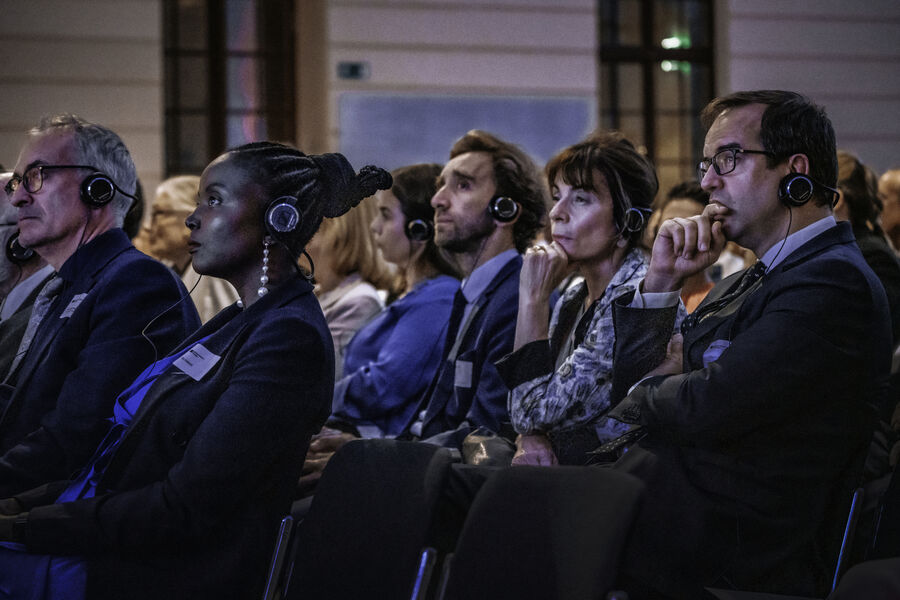 2003 – 2023, Festveranstaltung anlässlich des 20-jährigen Bestehens der Beratenden Kommission NS-Raubgut am 14. September 2023 im Jüdischen Museum Berlin, © Beratende Kommission NS-Raubgut/ Gabriele Di Stefano, 2023
2003 – 2023, Festveranstaltung anlässlich des 20-jährigen Bestehens der Beratenden Kommission NS-Raubgut am 14. September 2023 im Jüdischen Museum Berlin, © Beratende Kommission NS-Raubgut/ Gabriele Di Stefano, 2023
 „Wiedergutmachen“ – Aber wie?, Festrede Prof. Dr. Mary Fulbrook, © Beratende Kommission NS-Raubgut/ Gabriele Di Stefano, 2023
„Wiedergutmachen“ – Aber wie?, Festrede Prof. Dr. Mary Fulbrook, © Beratende Kommission NS-Raubgut/ Gabriele Di Stefano, 2023
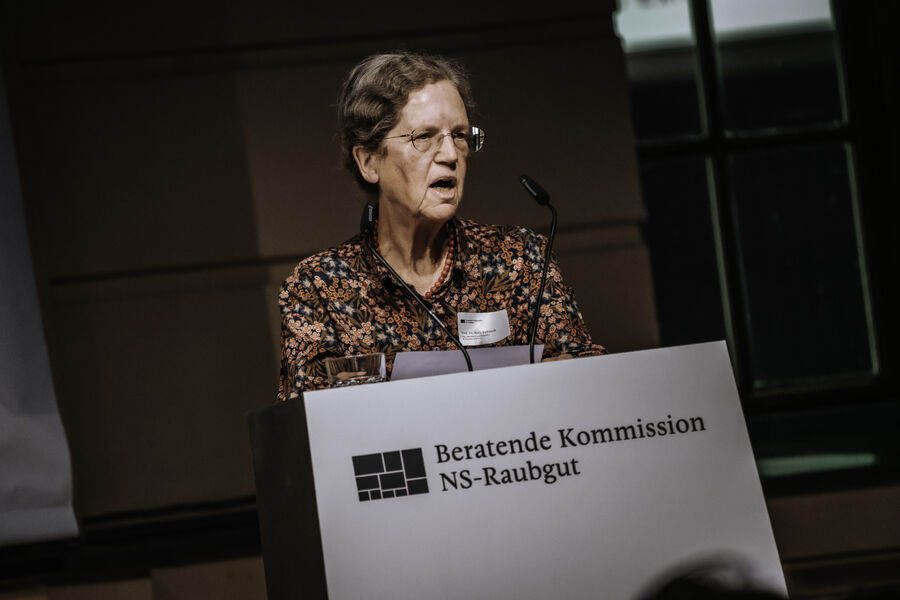 Prof. Dr. Mary Fulbrook: „Mitschuld ist nicht zeitlich begrenzt; Mitschuld kann über Generationen hinweg fortbestehen, wenn Menschen wissentlich weiterhin von den Verbrechen ihrer Vorfahren profitieren.“, © Beratende Kommission NS-Raubgut/ Gabriele Di Stefano, 2023
Prof. Dr. Mary Fulbrook: „Mitschuld ist nicht zeitlich begrenzt; Mitschuld kann über Generationen hinweg fortbestehen, wenn Menschen wissentlich weiterhin von den Verbrechen ihrer Vorfahren profitieren.“, © Beratende Kommission NS-Raubgut/ Gabriele Di Stefano, 2023
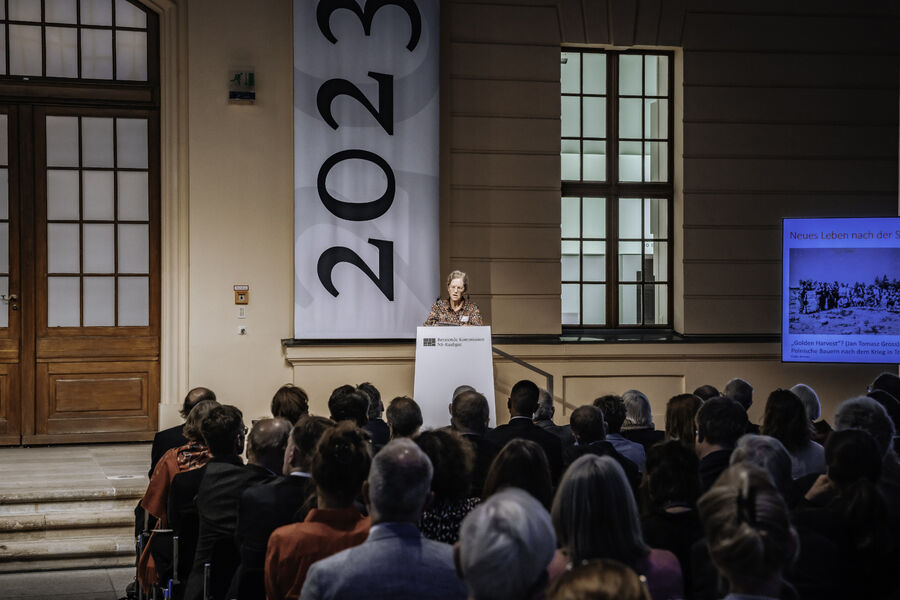 Prof. Dr. Mary Fulbrook, © Beratende Kommission NS-Raubgut/ Gabriele Di Stefano, 2023
Prof. Dr. Mary Fulbrook, © Beratende Kommission NS-Raubgut/ Gabriele Di Stefano, 2023
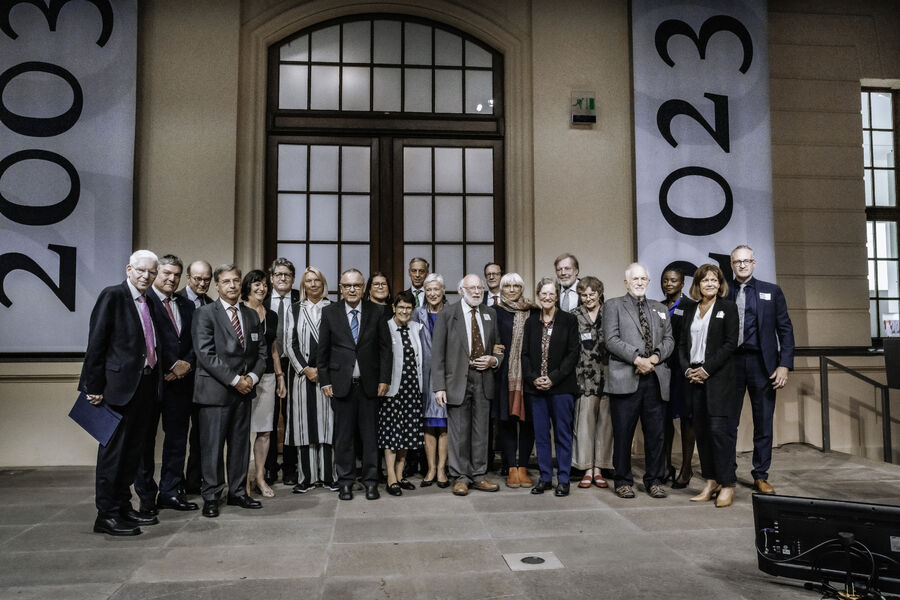 Gruppenfoto, © Beratende Kommission NS-Raubgut/ Gabriele Di Stefano, 2023
Gruppenfoto, © Beratende Kommission NS-Raubgut/ Gabriele Di Stefano, 2023
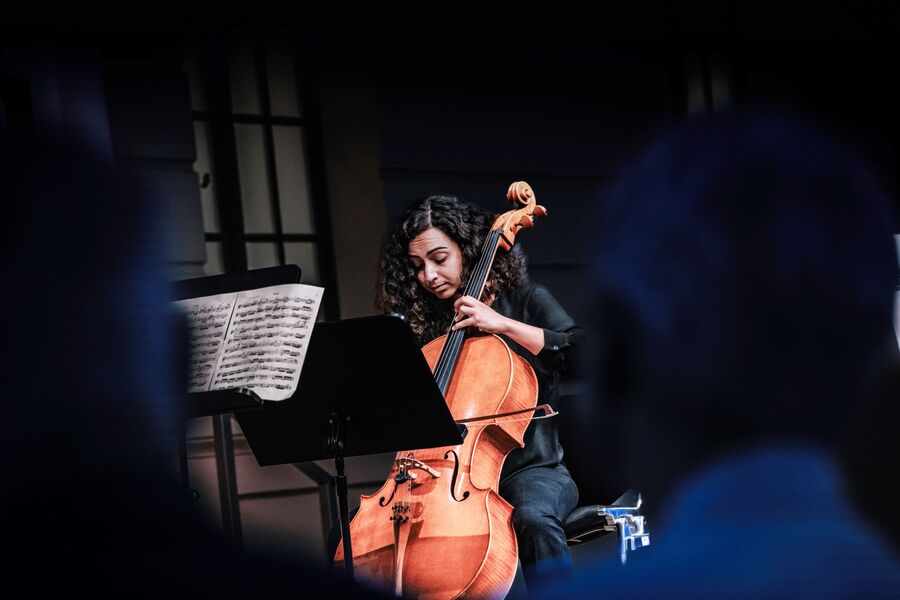 Streichtrio der Barenboim-Said Akademie, Idil Pulat, © Beratende Kommission NS-Raubgut/ Gabriele Di Stefano, 2023
Streichtrio der Barenboim-Said Akademie, Idil Pulat, © Beratende Kommission NS-Raubgut/ Gabriele Di Stefano, 2023